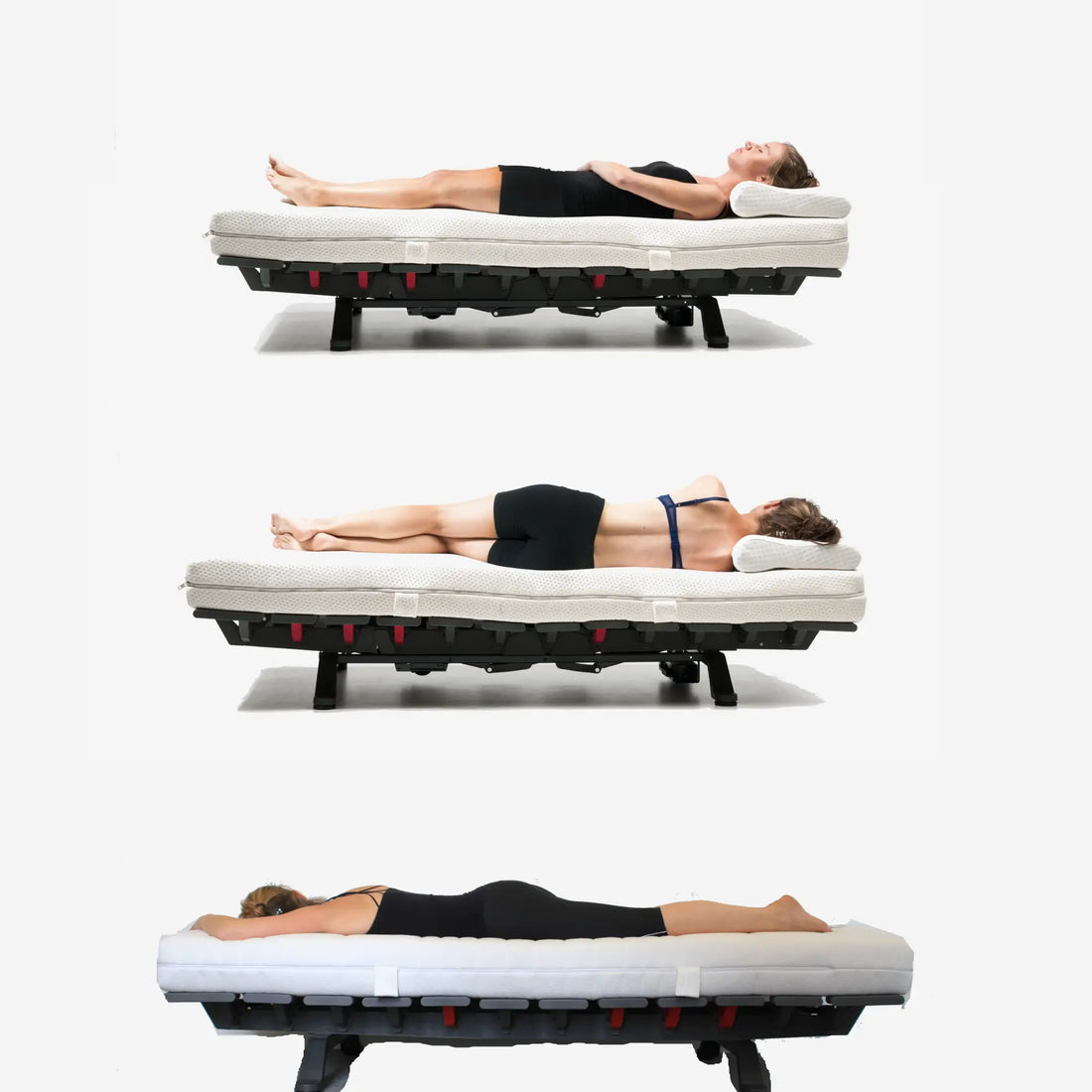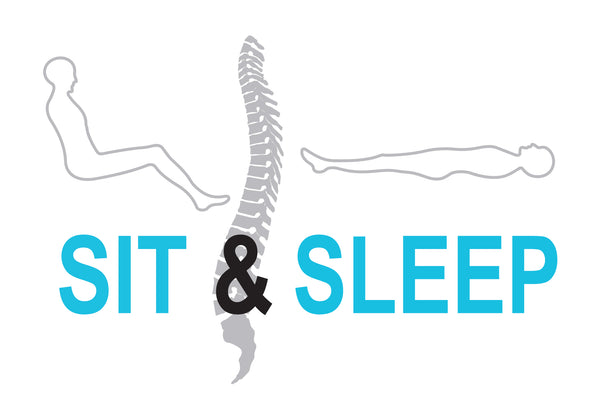
What is the best sleeping position?
Do you spring out of bed feeling refreshed in the morning, or do you struggle to get out of bed? Your sleeping position might be the culprit. How you position your body while resting can mean the difference between waking up feeling refreshed and rested or waking up with fatigue, aches, and/or pains.
For example, some people wake up in the morning with spinal symptoms (such as neck pain, lower back pain, or sciatica) that they didn't have when they went to bed. This has led to the belief that certain sleeping positions can cause pain, discomfort, or even spinal injuries.
What is the best sleeping position
Extensive research has been conducted on various sleep positions. One well-designed study showed no clear link between sleep positions (including stomach sleeping) and spinal symptoms. Another study, a comprehensive review of sleep studies, found some evidence that side sleeping was protective against spinal stiffness, but the authors concluded that there is not yet enough research evidence to draw definitive or causal conclusions, and therefore, more research is needed.
However, the authors did suggest that given the importance of good quality sleep, it's best to choose your most comfortable sleeping position until further evidence proves otherwise.
Regardless of your sleeping position, the most important thing is to achieve proper spinal alignment. In other words, ensure your neck, shoulders, and back are aligned. This alignment means less tension is placed on sensitive areas of the body, reducing the risk of waking up with pain.
There are three basic sleeping positions: on your back, stomach, or side. There are also several variations, and many people alternate between these positions during sleep. Although people move a lot in their sleep, according to various studies, the most common sleeping positions in adults are proportionally as follows: Side sleeping - 74%, Stomach sleeping - 16%, Back sleeping - 10%.
Side sleeping
This is the most common sleeping position. The preference for side sleeping increases with age. As people age, they also change positions less frequently, meaning seniors spend relatively more time in the side-lying position.
Sleeping on both sides can reduce snoring and help with acid reflux. Compared to other sleeping positions, it can even help remove toxins from the brain more effectively. In addition, sleeping on the right side can improve breathing, reduce heart palpitations, and lead to better control over certain nervous system activities.
Depending on their height and weight, side sleepers may notice parts of their body curve uncomfortably. These curves can cause discomfort upon waking. For side sleepers who experience pain when they wake up, a pillow between their knees can help correct their side-sleeping position. The pillow helps align the spine while resting.
Back sleeping
Another sleeping position is back sleeping. Research shows that this is more common in women than in men. Unlike the trend toward side sleeping, the preference for this position usually decreases with age and weight gain.
Incidentally, this position won't work for everyone. Snoring increases in frequency and decibels in this position. Moreover, experts even advise against this position, as it can worsen the condition by blocking the airway with the tongue.
In addition, back sleepers may experience lower back problems. Placing a pillow or rolled-up towel under the knees can relieve some lumbar tension.
But are there any benefits to sleeping on your back? Research says yes. Just like sleeping on your side, back sleeping can help people who suffer from acid reflux. Unlike side sleeping, back sleeping can also be better for preventing sleep wrinkles.
Stomach sleeping
Sleeping on your stomach is the least recommended sleeping position for adults. First and foremost, unnatural hyperextension and rotation of the neck and head places excessive strain on the vertebrae. This can lead to headaches, neck and shoulder pain, and even back pain. Research suggests that there is no significant correlation between gender, age, or weight for this position.
There's a reason you won't find doctors who recommend stomach sleeping. As mentioned above, it's clear why stomach sleeping is not recommended.
Other reasons why people may prefer less stomach sleeping include:
- Difficulty breathing; it takes more energy to lift the body and expand the rib cage during breathing.
- The heart has to work harder; the heart's output is reduced when sleeping on your stomach, so the heart has to beat faster to compensate.
- Loss of spinal flexibility - as people age, they lose spinal flexibility, making it harder to adapt to stomach sleeping.
If you're a persistent stomach sleeper from childhood, it's recommended to choose a firmer mattress to prevent your pelvis from tilting forward too much and to maintain as much symmetry as possible. Firmness levels will vary based on preference and weight. Anecdotal evidence (i.e., opinions not supported or refuted by research) suggests that supporting your pelvis with a pillow can help improve spinal alignment and reduce the risk of back pain from sleeping on your stomach. Other anecdotal evidence suggests that it's better for your spine to sleep with both legs straight and evenly aligned, rather than bending a knee or crossing one leg over the other, which are common leg positions. This reduces twisting or twisting of the spine.
Just like back and stomach supports, a pillow can help. Placing a pillow under your abdomen can relieve some tension in your back.
The best position for reflux
Because reflux is not caused by excessive acid production in the stomach but is the result of excessive backflow of stomach contents into the esophagus and/or hypersensitivity of the esophagus, adjusting the sleeping position can reduce reflux.
If you regularly experience stomach acid in your throat while sleeping, you may be developing sleep disorders. The following sleep-related symptoms often occur:
Insomnia, restless legs syndrome, daytime sleepiness, sleep apnea
If you feel stomach acid coming up into your throat, you often cough and sometimes even feel like you're choking. These symptoms are obviously worse when you're lying down or trying to sleep. The reflux of acid from your stomach into your esophagus can reach as high as your throat and larynx. This is also why you experience that coughing and choking sensation, which is a waste of sleep.
Advice for reflux often involves using extra pillows and/or raising the head of the bed to sit more upright and create more resistance to the flow of acid.
The downside of this sleeping position is that the spinal alignment is no longer correct, leading to spinal problems such as neck pain, lower back pain, or sciatica. To maintain spinal alignment, it's best to raise the entire slatted bed base by placing it on blocks of 10 to 15 centimeters at the head of your bed.
At Sit & Sleep, you can also choose a slatted base that can be adjusted independently of another slatted base to five different heights. This allows your partner to continue sleeping in their current position, maintaining optimal spinal alignment.
Dr. Johnson (chief of internal medicine at Eastern Virginia School of Medicine) says that sleeping on your left side can help reduce heartburn symptoms at night. It's advisable to sleep on your left side. Sleeping on your right side relaxes the connecting muscles between your stomach and esophagus. When these muscles contract when you sleep on your left side, they help control reflux. As a memory trick, he says: Right is wrong!
Another tip is to avoid sleeping on your stomach. This can put pressure on your stomach, pushing acid upwards and potentially causing acid reflux.
This is more likely if you are overweight or obese. Try different sleeping positions to see what works best for you, regardless of your weight.
Is it healthy to sleep with your feet up?
Heavy, painful legs, swollen feet, varicose veins, or other conditions can cause uncomfortable discomfort or pain in the feet and legs. This often doesn't resolve on its own, requiring treatment and guidance from a doctor and/or physiotherapist. Staying active is essential to keep your calf pump active and ensure excess fluid is drained, but you also need time to sleep, allowing the body to enter a resting state. What you can do at home to reduce symptoms is to ensure the foot of your bed is raised entirely.
If you were to elevate your legs using an adjustable slatted base, you'd actually disrupt the alignment of your spine. Simply elevating your legs, when lying on your back, actually tilts your pelvis backward, causing your lower back to round, and the pressure on your intervertebral discs is no longer evenly distributed. This position can actually lead to discomfort.


